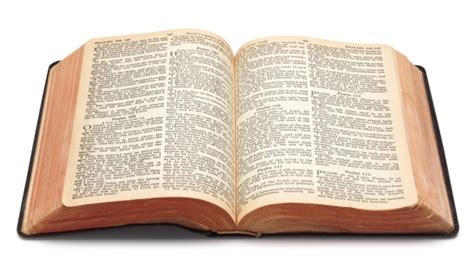From the beginning of New Testament Christianity at the Feast of Pentecost (Acts 2: 38-39) to our time, unbroken and uninterrupted; the church has baptized babies. Entire households (Jewish, proselytes and Gentiles) were baptized by Christ’s original 12 Apostles (I Corinthians 1: 16; Acts 11: 14, 16: 15, 33, 18: 8) and that practice has continued with each generation.
The Early Church
Polycarp (69-155), a disciple of the Apostle John, was baptized as an infant. This enabled him to say at his martyrdom. "Eighty and six years have I served the Lord Christ" (Martyrdom of Polycarp 9: 3).
Justin Martyr (100 - 166) of the next generation states about the year 150, "Many, both men and women, who have been Christ’s disciples since childhood, remain pure at the age of sixty or seventy years" (Apology 1: 15). Further, in his Dialog with Trypho the Jew, Justin Martyr states that Baptism is the circumcision of the New Testament.
Irenaeus (130 - 200), some 35 years later in 185, writes in Against Heresies II 22: 4 that Jesus "came to save all through means of Himself - all, I say, who through him are born again to God - infants and children, boys and youth, and old men."
Church Councils and Apologists
Similar expressions are found in succeeding generations by Origen (185 - 254) and Cyprian (215 - 258) who reflect the consensus voiced at the Council of Carthage in 254. The 66 bishops said: "We ought not hinder any person from Baptism and the grace of God..... especially infants. . . those newly born." Preceding this council, Origen wrote in his Commentary on Romans 5: 9: "For this also it was that the church had from the Apostles a tradition to give baptism even to infants. For they to whom the divine mysteries were committed knew that there is in all persons a natural pollution of sin which must be done away by water and the Spirit."
Elsewhere Origen wrote in his Homily on Luke 14: "Infants are to be baptized for the remission of sins.
Cyprian’s reply to a country bishop, Fidus, who wrote him regarding the Baptism of infants, is even more explicit. Should we wait until the eighth day as did the Jews in circumcision? No, the child should be baptized as soon as it is born (To Fidus 1: 2).
To prevent misunderstanding by rural bishops, perhaps not as well-schooled as other or even new to the faith, the Sixteenth Council of Carthage in 418 unequivocally stated: "If any man says that newborn children need not be baptized . . . let him be anathema."
Augustine
Augustine (354 - 430), writing about this time in De Genesi Ad Literam, X: 39, declares, "The custom of our mother church in baptizing infants must not be . . . accounted needless, nor believed to be other than a tradition of the apostles."
He further states, "If you wish to be a Christian, do not believe, nor say, nor teach, that infants who die before baptism can obtain the remission of original sin." And again, "Whoever says that even infants are vivified in Christ when they depart this life without participation in His sacrament (Baptism), both opposes the Apostolic preaching and condemns the whole church which hastens to baptize infants, because it unhesitatingly believes that otherwise they cannot possibly be vivified in Christ."
Specific directions, with detailed instructions, for the baptizing of infants were given by bishops to pastors and deacons during this era of Christian history. In the year 517, seven bishops met in Gerona, Catelina, and framed 10 rules of discipline for the church in Spain. The fifth rule states that ". . . in case infants were ill . . . if they were offered, to baptize them, even though it were the day that they were born . . . " such was to be done (The History of Baptism by Robert Robinson, [London: Thomas Knott, 1790], p.269.).
The foregoing pattern, practiced in both East and West, remained customary in Christianity through the Dark and Middle Ages until modem times. Generally, the infant was baptized during the first week of life, but in cases of illness this took place on the day of birth. An example of this already comes from about 260 in North Africa in an inscription from Hadrumetum (Inscriptiones Latinae Christianae Veteres II, 4429-A):
Arisus in pace
natus ora sexta
bixit supra scriptas VIIII This Latin inscription indicates that a child who died nine hours after its birth was baptized. Such practice of Baptism within the first days of life, or on the day of birth in an emergency, remained for both Protestants, Roman Catholics and Eastern Orthodox.
The Witness of the Catacombs
The witness of the literary texts of the early church fathers, councils and apologists for the practice of infant Baptism in the first Christian centuries receives valuable confirmation from the catacombs and cemeteries of the Middle East, Africa and southern Europe. Below are epitaphs from the 200’s of small children who had been baptized. It is interesting to note that there are no Christian epitaphs in existence earlier than 200. As soon as the era of Christian inscriptions begins, we find evidence for infant Baptism. [editor's note- the two referenced epitaphs are in the original document].
In that century there are attributes and symbols in tombstones inscriptions of little children which allows us to clearly infer we are dealing with baptized children. The following is as early as 200 or shortly thereafter: [editor's note- the referenced epitaph is in the original document].
In the second last line is the phrase Dei Serv(u)s which means slave of God followed by the Chi Rho symbol for Christ. The last line is the Greek ichtheos familiar as the "fish symbol" - an anagram for Jesus Christ God’s Son Savior. These words and symbols mark the one-year, two months, and four-day-old child as a baptized Christian.
From the Lateran Museum, also from the 200’s, is a Greek inscription that gives information about the religious status of the parents. It reads, "I, Zosimus, a believer from believers, lie here having lived 2 years, 1 month, 25 days."
Also from this era are headstones for children who received emergency baptism with ages ranging from 11 months to 12 years. Since the patristic sources of the third century, as those earlier, give us to understand that the children of Christian parents were baptized in infancy, we must conclude that these emergency baptisms were administered to children of non-Christians. The inscriptions themselves confirm this conclusion. In the Roman catacomb of Priscilla is reference to a private emergency baptism that was administered to the one-and-three-quarter-year-old Apronianus and enabled him to die as a believer. The inscription reads:
Dedicated to the departed.
Florentius made this inscription
for his worthy son Apronianus who
lived one year and nine months and five days.
As he was truly loved by his grandmother
and she knew that his death was imminent,
she asked the church that he might depart from the world as a believer. The fact that it was the grandmother who urged the baptism makes it very probable that the father of the child, Florentius, was a pagan. This is confirmed by the formula in the first line which is pagan and not found on any other Christian epitaphs. We have thus in this inscription evidence for a missionary baptism administered to a dying non-Christian infant.
Cont in part 2 |

